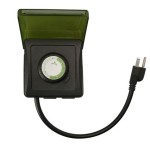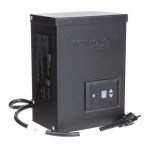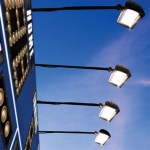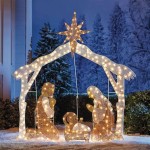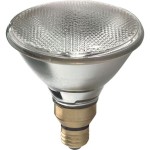Outdoor Natural Gas Fire Pit Won't Light Up Properly: Troubleshooting Tips
An outdoor natural gas fire pit can be a fantastic addition to any backyard, providing warmth, ambiance, and a gathering place for friends and family. However, when your fire pit refuses to light up properly, it can be frustrating and dampen the spirit of your outdoor gatherings. This article will guide you through common issues and provide practical troubleshooting tips to help you get your fire pit roaring again.
1. Check the Gas Supply
The first step in troubleshooting an outdoor natural gas fire pit that won't light is checking the gas supply. This is the most common culprit, and it's essential to ensure that gas is flowing to the fire pit. Here's what you should do:
- Verify the Gas Valve: Ensure the main gas valve supplying your fire pit is turned fully open. This valve is usually located near the fire pit or at the gas line connection point.
- Inspect the Gas Line: Check for any kinks, bends, or damage along the gas line leading to your fire pit. A damaged line can restrict gas flow and prevent ignition.
- Check the Pressure: If you have a pressure gauge on your gas line, verify that the pressure reading is within the manufacturer's specifications. If the pressure is too low, it could be a sign of a gas supply problem.
- Consult Your Gas Provider: If you suspect a problem with your gas supply, contact your gas provider. They can help determine if there's an issue at their end, such as a service interruption or a low gas pressure in your area.
2. Investigate the Ignition System
If you have confirmed that gas is flowing to the fire pit, the next step is to inspect the ignition system. An issue with the ignition system can prevent the gas from being ignited properly.
- Examine the Spark Generator: Check for any signs of damage or corrosion on the spark generator. If the spark generator is faulty, it won't produce a spark to ignite the gas.
- Test the Igniter Button: If you have a manual igniter button, ensure it functions properly. Press the button firmly and observe if it produces a spark.
- Inspect the Ignition Wires: If you can access the ignition wires, check for any breaks or damaged insulation. Damaged wires can disrupt the electrical signal to the spark generator.
- Replace the Battery (If Applicable): If your fire pit utilizes a battery-powered ignition system, ensure the battery is fresh and properly installed. A dead battery can prevent the spark generator from working.
3. Clean or Replace the Burner
Over time, dust, debris, and spiderwebs can accumulate in the fire pit burner, obstructing gas flow and affecting ignition. Regular cleaning is essential for optimal performance.
- Remove the Burner: Carefully remove the burner from the fire pit, following the manufacturer's instructions. Avoid forcing anything, as this could damage the burner or its mounting.
- Clean the Burner: Thoroughly clean the burner with a wire brush, removing any debris or obstructions. Pay attention to the burner ports where the gas exits. A clogged burner port can significantly affect the flame and ignition.
- Replace the Burner (If Necessary): If the burner is excessively damaged or worn, it may need to be replaced. Refer to your fire pit manual for recommended replacement parts.
4. Address Other Potential Issues
In addition to the common issues discussed above, other factors can prevent your fire pit from lighting properly:
- Wind Conditions: Strong winds can blow out the flame or prevent the gas from igniting effectively. If windy, consider adjusting the flame settings or using a wind guard to protect the flame.
- Low Ambient Temperature: In extremely cold conditions, the gas may not ignite as easily. Consider using a handheld torch lighter to ignite the gas directly.
- Faulty Control Panel: If your fire pit has a control panel, it can malfunction and prevent proper gas flow or ignition. Inspect the control panel for loose wires, corrosion, or other signs of damage.
- Safety Features: Some fire pits have built-in safety features that can prevent ignition if they detect a problem. If you're unsure about the safety features, consult your fire pit manual for guidance.
If you have checked all the above points and your fire pit still isn't working properly, it's best to consult with a qualified technician. They can diagnose any complex issues and make the necessary repairs to ensure your fire pit is safe and functional. Remember to always prioritize safety and follow the manufacturer's instructions when working with natural gas appliances.

How Do I Build A Diy Fire Pit For Natural Gas Starfire Direct

How To Light An Outdoor Fire Pit Full Service Chimney

Expert Advice 9 Common Gas Fire Pit Problems Solutions Montana Pits

A Quick Guide To Gas Fire Pits Everything You Need Know

Expert Advice 9 Common Gas Fire Pit Problems Solutions Montana Pits

Expert Advice 9 Common Gas Fire Pit Problems Solutions Montana Pits

Expert Advice 9 Common Gas Fire Pit Problems Solutions Montana Pits

Fire Pit Basics Why Is My Propane Flame Low

3 Fire Pit Safety Rules For Every Backyard True Value Hardware

Wood And Gas Fire Pit Fireplace Safety
Related Posts
